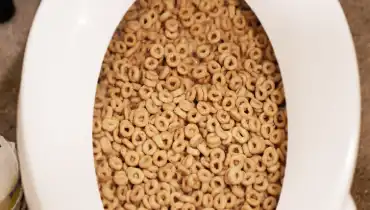Can One to Flush Food in the Toilet?
Can One to Flush Food in the Toilet?
Blog Article
Every person has got their private way of thinking on the subject of What Can Happen If You Flush Food Down the Toilet?.

Intro
Many people are often faced with the issue of what to do with food waste, specifically when it concerns leftovers or scraps. One common question that arises is whether it's okay to flush food down the commode. In this write-up, we'll look into the reasons why individuals may think about purging food, the repercussions of doing so, and alternative approaches for correct disposal.
Reasons that people might consider purging food
Lack of awareness
Some people might not understand the possible harm brought on by flushing food down the toilet. They may wrongly believe that it's a harmless technique.
Comfort
Flushing food down the toilet may look like a fast and easy solution to throwing away undesirable scraps, especially when there's no close-by garbage can readily available.
Idleness
In some cases, people might just select to flush food out of sheer laziness, without thinking about the repercussions of their activities.
Repercussions of flushing food down the bathroom
Ecological influence
Food waste that ends up in rivers can add to pollution and damage water ecological communities. In addition, the water utilized to purge food can strain water resources.
Plumbing issues
Purging food can bring about clogged pipelines and drains, creating costly pipes fixings and hassles.
Types of food that ought to not be purged
Coarse foods
Foods with fibrous textures such as celery or corn husks can get tangled in pipelines and create clogs.
Starchy foods
Starchy foods like pasta and rice can absorb water and swell, leading to obstructions in pipes.
Oils and fats
Greasy foods like bacon or cooking oils should never ever be purged down the commode as they can solidify and cause clogs.
Correct disposal approaches for food waste
Utilizing a garbage disposal
For homes geared up with waste disposal unit, food scraps can be ground up and flushed via the pipes system. Nevertheless, not all foods appropriate for disposal in this fashion.
Recycling
Particular food packaging products can be reused, decreasing waste and decreasing environmental impact.
Composting
Composting is an eco-friendly method to dispose of food waste. Organic products can be composted and made use of to improve dirt for gardening.
The significance of correct waste administration
Reducing ecological harm
Correct waste monitoring methods, such as composting and recycling, aid decrease pollution and maintain natural deposits for future generations.
Safeguarding plumbing systems
By staying clear of the technique of flushing food down the commode, property owners can stop pricey plumbing fixings and preserve the honesty of their pipes systems.
Final thought
To conclude, while it may be appealing to flush food down the commode for comfort, it is necessary to comprehend the potential repercussions of this activity. By embracing appropriate waste management techniques and getting rid of food waste responsibly, individuals can add to much healthier plumbing systems and a cleaner setting for all.
FLUSH FOOD DOWN THE TOILET?
FLUSHING FOOD CAN CAUSE BLOCKED DRAINS IN YOUR HOME
All of the plumbing fixtures in your home are connected to the same sewer pipe outside of your home. This outdoor sewer pipe is responsible for transporting all the wastewater from your home to the Council sewer mains. Even small pieces of food that go down the kitchen sink can cause problems for your sewer. It should therefore be obvious that flushing larger bits of food, such as meat, risks a clog in either the toilet itself or the sewer pipes. Flushing greasy food is even more problematic because oil coagulates when it cools, coating the interior lining of your pipes.
THE TOILET IS NOT A BIN
Food isn’t the only thing that people shouldn’t be flushing down the toilet. People use the toilet to dispose of all kinds of things such as tampons, makeup wipes, dental floss, kitty litter and even underwear. Water goes to great lengths to educate residents about the high costs and stress placed on wastewater treatment systems simply from people flushing the wrong stuff down the toilet. It costs taxpayers millions of dollars each year, and homeowners thousands in blocked drain repairs.
FLUSHING FOOD IS A WASTE OF WATER
Flushing food is a waste of our most precious resource - water. In June this year Level 1 water restrictions were introduced to protect water supply from drought conditions. Much of New South Wales continues to be affected by prolonged drought with recent figures revealing up to 97 per cent of the state remains in drought. Depending on whether you have a single or dual flush toilet, every single flush uses between five and 11 litres of water. In the current climate this is a huge amount of water to be wasting on flushing food that should be placed in the bin (or better yet, the compost).
https://www.jabplumbingsolutions.com.au/blog/can-you-flush-food-down-the-toilet

I found that blog posting about Is it safe to flush food (especially rice) down the toilet? when doing a lookup on the internet. Are you aware of another person who is looking into the topic? Take a moment to share it. Thanks for being here. Revisit us soon.
Book 24/7 Report this page